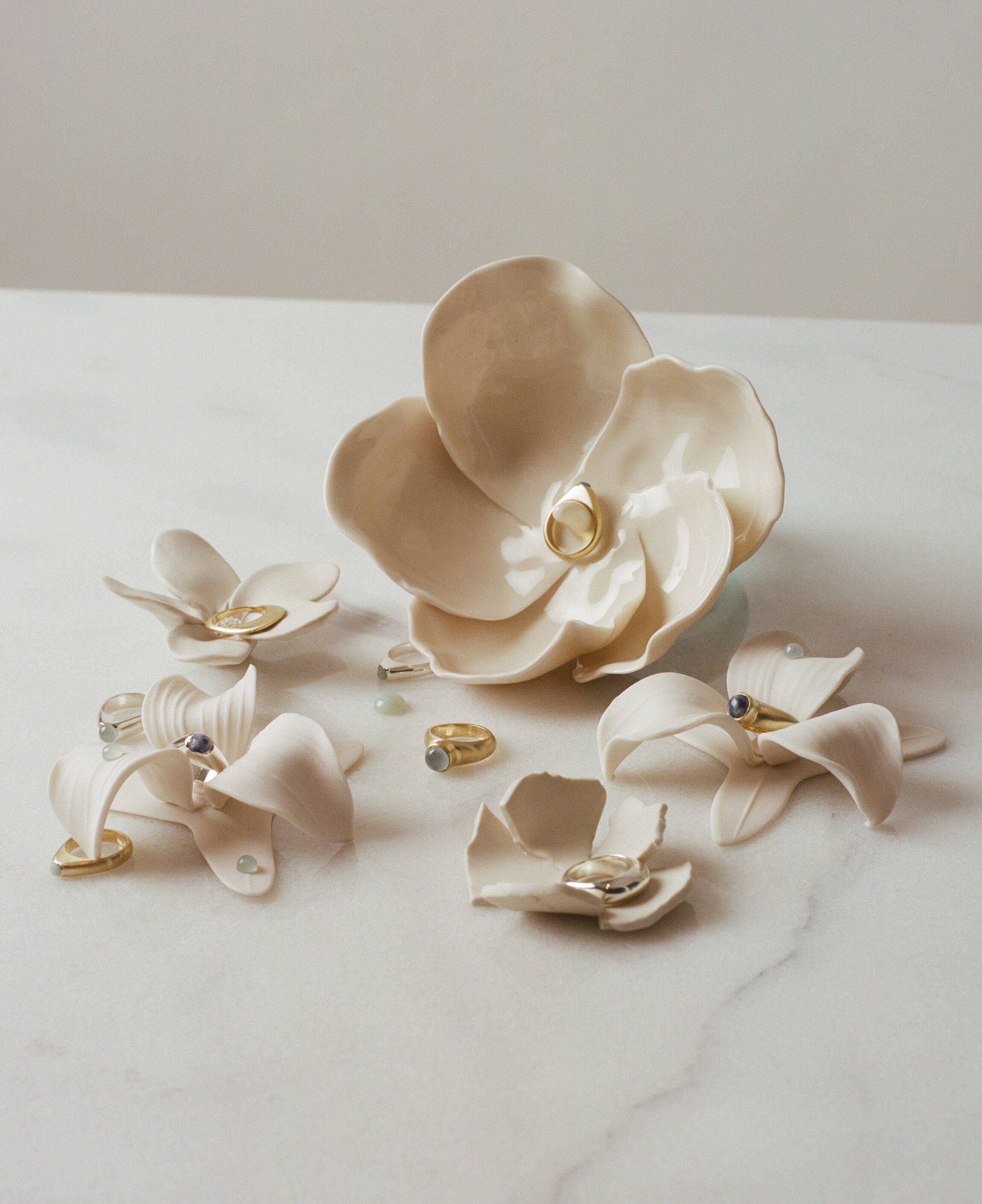 Image 1 of 9
Image 1 of 9

 Image 2 of 9
Image 2 of 9

 Image 3 of 9
Image 3 of 9

 Image 4 of 9
Image 4 of 9

 Image 5 of 9
Image 5 of 9

 Image 6 of 9
Image 6 of 9

 Image 7 of 9
Image 7 of 9

 Image 8 of 9
Image 8 of 9

 Image 9 of 9
Image 9 of 9










Abi Ring - brass
Minimal cocktail ring in solid brass, with choice of 8mm blue spot jasper or 8mm aquamarine cabochon. Lustrous enough for an occasion and comfortable enough for the every day. Measures 29mm tall with stone, 23mm wide and 17mm thick at the top.
Made to order — please allow up to 2 weeks of lead time before shipping.
Price listed in USD — Canadians who wish to purchase in CAD, please contact info@yuun.studio.
Blue — in Farsi, âbi.
As one of the most enduring and widely recognized types of ceramic, blue and white wares date back to the Tang dynasty (AD 618-906). The exemplary models of this style however originated during the Yuan Dynasty (1279-1368) in Jingdezhen, the porcelain capital of China, and was made possible by the import of the cobalt blue pigment from Persia. Starting in the Ming dynasty (1368-1644), many countries—from Ottoman Turkey and Persia to Holland and Victorian England to even colonial Mexico—appropriated the Chinese blue and white style in their own ceramic production. Ming blue and white also came to connote luxury consumption in this era, and fed the fashion for chinoiserie in Europe. *
(Within this abbreviated history, we wade the waters from appropriation to orientalism.)
—
The VESSEL collection is a meditation on what it means to hold, figuratively and literally. Aesthetically inspired by the ceramic tradition of China, each piece in the collection is an intimate reminder of presence and essence in our daily.
* Pierson, Stacey and Victoria and Albert Museum. Chinese Ceramics. London, England, Harry N. Abrams, 2009.
Minimal cocktail ring in solid brass, with choice of 8mm blue spot jasper or 8mm aquamarine cabochon. Lustrous enough for an occasion and comfortable enough for the every day. Measures 29mm tall with stone, 23mm wide and 17mm thick at the top.
Made to order — please allow up to 2 weeks of lead time before shipping.
Price listed in USD — Canadians who wish to purchase in CAD, please contact info@yuun.studio.
Blue — in Farsi, âbi.
As one of the most enduring and widely recognized types of ceramic, blue and white wares date back to the Tang dynasty (AD 618-906). The exemplary models of this style however originated during the Yuan Dynasty (1279-1368) in Jingdezhen, the porcelain capital of China, and was made possible by the import of the cobalt blue pigment from Persia. Starting in the Ming dynasty (1368-1644), many countries—from Ottoman Turkey and Persia to Holland and Victorian England to even colonial Mexico—appropriated the Chinese blue and white style in their own ceramic production. Ming blue and white also came to connote luxury consumption in this era, and fed the fashion for chinoiserie in Europe. *
(Within this abbreviated history, we wade the waters from appropriation to orientalism.)
—
The VESSEL collection is a meditation on what it means to hold, figuratively and literally. Aesthetically inspired by the ceramic tradition of China, each piece in the collection is an intimate reminder of presence and essence in our daily.
* Pierson, Stacey and Victoria and Albert Museum. Chinese Ceramics. London, England, Harry N. Abrams, 2009.
